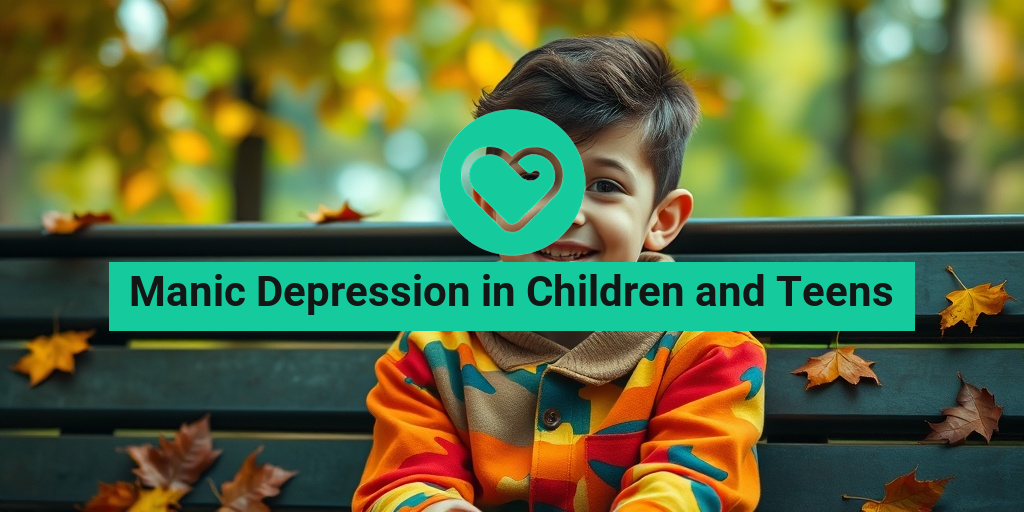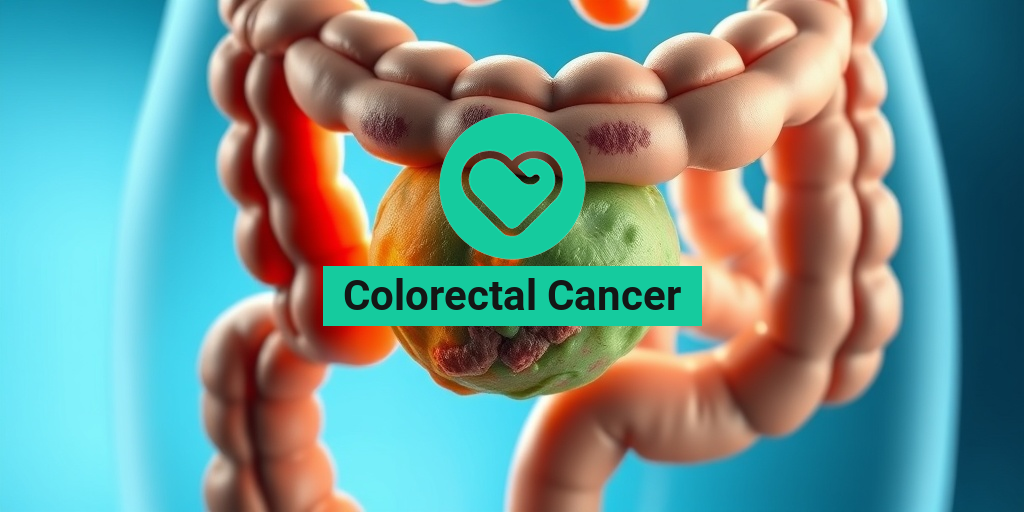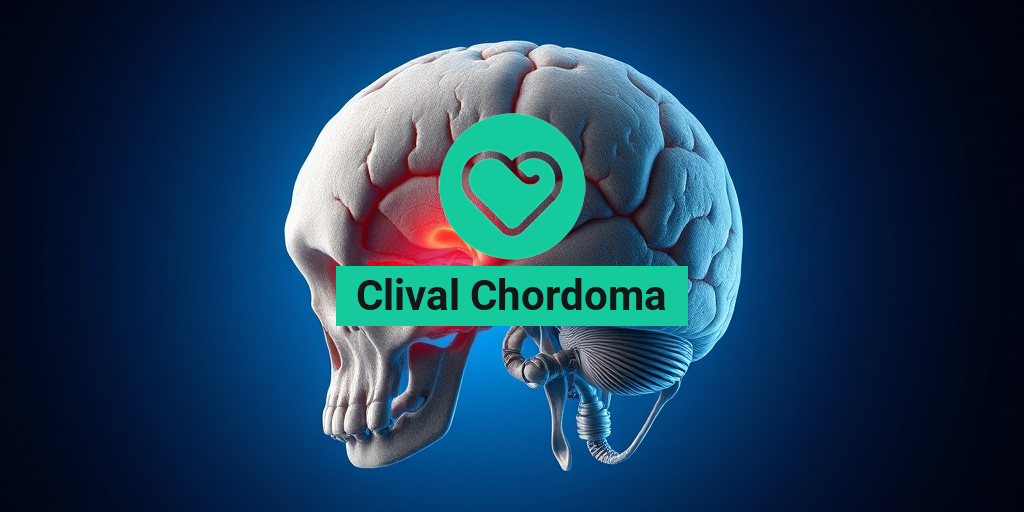What Is Manic Depression?
Manic depression, now more commonly referred to as bipolar disorder, is a mental health condition characterized by extreme mood swings that include emotional highs (mania or hypomania) and lows (depression). While it can affect individuals of all ages, manic depression in children and teens presents unique challenges and requires careful attention.
In children and adolescents, the symptoms of manic depression can manifest differently than in adults. This condition can disrupt daily life, affecting school performance, relationships, and overall well-being. Understanding the nuances of manic depression is crucial for parents, educators, and healthcare providers to ensure timely intervention and support.
The Different Types of Bipolar Disorder
Bipolar disorder is categorized into several types, each with distinct characteristics:
- Bipolar I Disorder: Defined by manic episodes lasting at least seven days or by manic symptoms that are so severe that immediate hospital care is needed. Depressive episodes may occur as well.
- Bipolar II Disorder: Involves a milder form of mood elevation known as hypomania, along with depressive episodes. Individuals do not experience the full-blown manic episodes typical of Bipolar I.
- Cyclothymic Disorder: Characterized by periods of hypomanic symptoms and periods of depressive symptoms lasting for at least two years (one year in children and teens).
Recognizing these types can help in understanding the specific challenges faced by young individuals with manic depression.
Symptoms of Manic Depression
The symptoms of manic depression can vary widely, but they generally fall into two categories: manic/hypomanic symptoms and depressive symptoms. Being aware of these symptoms is essential for early detection and intervention.
Manic and Hypomanic Symptoms
During a manic or hypomanic episode, children and teens may exhibit:
- Increased energy and activity: They may seem unusually energetic, talkative, or restless.
- Elevated mood: A child may appear overly happy or euphoric, often without a clear reason.
- Decreased need for sleep: They might sleep less than usual and still feel energetic.
- Racing thoughts: Thoughts may come and go quickly, making it hard for them to focus.
- Impulsivity: Engaging in risky behaviors, such as spending sprees or reckless driving.
Depressive Symptoms
Conversely, during depressive episodes, symptoms may include:
- Persistent sadness: A child may seem down or hopeless for an extended period.
- Loss of interest: They may lose interest in activities they once enjoyed, including hobbies and social interactions.
- Changes in appetite: Significant weight loss or gain may occur due to changes in eating habits.
- Fatigue: A constant feeling of tiredness or lack of energy.
- Difficulty concentrating: Struggling to focus on tasks or make decisions.
Seeking Help
If you notice these symptoms in your child or teen, it’s crucial to seek professional help. Early intervention can lead to better outcomes and help manage the condition effectively. Mental health professionals can provide a comprehensive evaluation and develop a tailored treatment plan that may include therapy, medication, and lifestyle changes.
For more information and resources on managing manic depression in children and teens, consider visiting Yesil Health AI, where you can find evidence-based health answers and support.
Understanding manic depression is the first step toward helping your child navigate their mental health journey. With the right support and resources, children and teens can lead fulfilling lives despite the challenges of this condition. 🌈

Manic Episodes Explained
Manic episodes are a hallmark of manic depression in children and teens, also known as bipolar disorder. These episodes can significantly impact a young person’s life, affecting their behavior, mood, and overall functioning. Understanding what a manic episode entails is crucial for parents, educators, and caregivers.
What is a Manic Episode?
A manic episode is characterized by an abnormally elevated mood, increased energy, and heightened activity levels. During these episodes, children and teens may exhibit a range of symptoms, including:
- Increased energy and activity: They may feel unusually energetic, engaging in multiple activities at once.
- Elevated mood: A child may appear excessively happy or euphoric, often without a clear reason.
- Racing thoughts: Their thoughts may race, making it difficult for them to focus or follow conversations.
- Impulsivity: Increased impulsivity can lead to risky behaviors, such as spending sprees or reckless driving.
- Decreased need for sleep: They may feel rested after only a few hours of sleep.
These symptoms can last for days, weeks, or even longer, and they can disrupt a child’s daily life, affecting their relationships, academic performance, and overall well-being. 🌟
Recognizing Manic Episodes in Children and Teens
Identifying manic episodes in young individuals can be challenging, especially since their behavior may be mistaken for typical adolescent exuberance. Here are some signs to watch for:
- Changes in behavior: Sudden shifts in behavior, such as increased talkativeness or irritability, can indicate a manic episode.
- Social withdrawal: While some may become more social, others might withdraw from friends and family.
- Academic decline: A noticeable drop in school performance can be a red flag.
If you suspect that a child or teen is experiencing manic episodes, it’s essential to seek professional help. Early intervention can lead to better outcomes and help manage the symptoms effectively. 🩺
Depressive Episodes in Youth
Just as manic episodes are a critical aspect of manic depression in children and teens, depressive episodes are equally important to understand. These episodes can be debilitating and may lead to significant challenges in a young person’s life.
What is a Depressive Episode?
A depressive episode is marked by a persistent feeling of sadness or a lack of interest in activities that were once enjoyable. Symptoms can vary widely but often include:
- Persistent sadness: A child may seem down or hopeless for an extended period.
- Loss of interest: They may lose interest in hobbies, friends, or school activities.
- Changes in appetite: Significant weight loss or gain can occur due to changes in eating habits.
- Fatigue: A constant feeling of tiredness or lack of energy is common.
- Difficulty concentrating: They may struggle to focus on tasks or make decisions.
These symptoms can lead to isolation and a decline in academic performance, making it crucial for parents and caregivers to recognize the signs early. 🌧️
Identifying Depressive Episodes in Children and Teens
Recognizing depressive episodes can be challenging, especially since children and teens may not always express their feelings openly. Here are some indicators to look for:
- Withdrawal from social activities: A noticeable decrease in social interactions can be a sign of depression.
- Changes in sleep patterns: Insomnia or excessive sleeping can indicate underlying issues.
- Expressions of hopelessness: If a child frequently expresses feelings of worthlessness or hopelessness, it’s essential to take these seriously.
Understanding and addressing depressive episodes is vital for the well-being of children and teens. If you notice these signs, consider reaching out to a mental health professional for guidance and support. 🧠

Causes and Risk Factors
Understanding manic depression in children and teens requires a deep dive into its causes and risk factors. This mental health condition, also known as bipolar disorder, can significantly impact the lives of young individuals. Here, we explore the various elements that contribute to its development.
Genetic Factors
One of the most significant risk factors for manic depression is genetics. Research indicates that children with a family history of bipolar disorder are at a higher risk of developing the condition themselves. If a parent or sibling has been diagnosed, the likelihood of a child experiencing similar symptoms increases. This genetic predisposition suggests that certain individuals may be more vulnerable to mood disorders due to inherited traits.
Environmental Influences
Environmental factors also play a crucial role in the onset of manic depression. Stressful life events, such as the loss of a loved one, parental divorce, or significant changes in living situations, can trigger mood episodes in susceptible children and teens. Additionally, exposure to trauma or abuse can significantly impact mental health, leading to the development of bipolar symptoms.
Brain Chemistry and Structure
Research has shown that imbalances in neurotransmitters—chemicals that facilitate communication between brain cells—can contribute to manic depression. These imbalances may affect mood regulation, leading to the extreme highs and lows characteristic of the disorder. Furthermore, studies suggest that structural differences in the brains of individuals with bipolar disorder may also play a role in its development.
Psychosocial Factors
Psychosocial factors, including personality traits and coping mechanisms, can influence the risk of developing manic depression. Children and teens who struggle with low self-esteem, high levels of anxiety, or difficulty managing stress may be more susceptible to mood disorders. Additionally, a lack of social support can exacerbate feelings of isolation and hopelessness, further increasing the risk.
Substance Abuse
Substance abuse is another critical risk factor associated with manic depression in children and teens. The use of drugs or alcohol can trigger mood swings and exacerbate existing symptoms. It is essential for parents and caregivers to be aware of the signs of substance abuse, as it can complicate the diagnosis and treatment of bipolar disorder.
Diagnosis of Manic Depression
Diagnosing manic depression in children and teens can be challenging due to the complexity of the disorder and the variability of symptoms. Early and accurate diagnosis is crucial for effective treatment and management. Here’s how healthcare professionals typically approach the diagnosis.
Clinical Evaluation
The first step in diagnosing manic depression involves a comprehensive clinical evaluation. Mental health professionals will conduct interviews with the child or teen, as well as their parents or guardians, to gather detailed information about symptoms, family history, and any significant life events. This evaluation helps to establish a clear picture of the individual’s mental health.
Symptom Assessment
Healthcare providers will assess the presence of specific symptoms associated with manic depression. These symptoms can include:
- Manic Episodes: Elevated mood, increased energy, decreased need for sleep, racing thoughts, and impulsive behavior.
- Depressive Episodes: Persistent sadness, fatigue, feelings of worthlessness, and loss of interest in activities.
It’s important to note that symptoms can vary widely among individuals, making it essential for professionals to consider the full spectrum of behaviors and emotions.
Diagnostic Criteria
To diagnose manic depression, mental health professionals often refer to the Diagnostic and Statistical Manual of Mental Disorders (DSM-5). This manual outlines specific criteria that must be met for a diagnosis of bipolar disorder, including the duration and severity of mood episodes. A thorough understanding of these criteria helps ensure that children and teens receive the appropriate diagnosis and treatment.
Collaboration with Schools and Other Professionals
Collaboration with teachers, school counselors, and other professionals can provide valuable insights into a child’s behavior and emotional well-being. Observations from multiple settings can help create a more comprehensive understanding of the child’s condition, aiding in the diagnostic process.
In conclusion, recognizing the causes and risk factors of manic depression in children and teens is vital for early intervention. A thorough diagnosis, supported by clinical evaluation and collaboration with various stakeholders, can pave the way for effective treatment and support. 🌈

Treatment Options Available
When it comes to manic depression in children and teens, also known as bipolar disorder, early intervention is crucial. Understanding the various treatment options can empower parents and caregivers to make informed decisions that best support their child’s mental health. Here are some of the most effective treatment strategies:
1. Psychotherapy
Psychotherapy, or talk therapy, is often the first line of treatment for manic depression. It provides a safe space for children and teens to express their feelings and learn coping strategies. Some common types of therapy include:
- Cognitive Behavioral Therapy (CBT): This approach helps children identify negative thought patterns and replace them with healthier ones.
- Family Therapy: Involving the family can improve communication and understanding, which is vital for a child’s recovery.
- Interpersonal and Social Rhythm Therapy (IPSRT): This therapy focuses on stabilizing daily rhythms and improving interpersonal relationships.
2. Medication
In many cases, medication is necessary to manage the symptoms of manic depression. A psychiatrist may prescribe:
- Mood Stabilizers: These help control mood swings and prevent episodes of mania and depression.
- Atypical Antipsychotics: These can be effective in treating severe mood episodes.
- Antidepressants: Sometimes used cautiously, as they can trigger manic episodes if not combined with a mood stabilizer.
It’s essential to work closely with a healthcare provider to find the right medication and dosage for your child, as individual responses can vary significantly. Regular follow-ups are crucial to monitor effectiveness and side effects.
3. Lifestyle Changes
Incorporating healthy lifestyle changes can significantly impact a child’s mental health. Here are some strategies to consider:
- Regular Exercise: Physical activity can help reduce symptoms of depression and anxiety.
- Healthy Diet: A balanced diet rich in omega-3 fatty acids, fruits, and vegetables can support brain health.
- Sleep Hygiene: Establishing a consistent sleep routine is vital, as sleep disturbances can exacerbate symptoms.
4. Support Groups
Connecting with others who understand the challenges of manic depression can be incredibly beneficial. Support groups provide a platform for sharing experiences, advice, and encouragement. Many organizations offer resources specifically for children and teens, helping them feel less isolated in their struggles.
Supporting Your Child’s Mental Health
As a parent or caregiver, supporting a child with manic depression can be challenging but also rewarding. Here are some effective ways to provide support:
1. Open Communication
Encourage your child to talk about their feelings and experiences. Create a safe and non-judgmental environment where they feel comfortable expressing themselves. Use open-ended questions to facilitate discussions, such as:
- “How are you feeling today?”
- “What was the best part of your day?”
- “Is there anything on your mind that you want to talk about?”
2. Educate Yourself and Your Child
Understanding manic depression is crucial for both you and your child. Educate yourselves about the condition, its symptoms, and treatment options. This knowledge can empower your child and help you both navigate the challenges together. Consider reading books, attending workshops, or joining online forums focused on mental health.
3. Encourage Healthy Coping Mechanisms
Help your child develop healthy coping strategies to manage their emotions. This could include:
- Journaling: Writing down thoughts and feelings can be therapeutic.
- Mindfulness and Meditation: These practices can help reduce anxiety and improve emotional regulation.
- Creative Outlets: Encourage activities like art, music, or sports to express emotions constructively.
4. Be Patient and Understanding
Remember that managing manic depression is a journey, and there will be ups and downs. Be patient with your child and yourself. Celebrate small victories and provide reassurance during difficult times. Your support can make a significant difference in their recovery process. 🌈
By being proactive and informed, you can help your child navigate the complexities of manic depression and foster a supportive environment that promotes their mental well-being. 💖

Frequently Asked Questions about Manic Depression in Children and Teens
What is Manic Depression in Children and Teens?
Manic Depression, also known as Bipolar Disorder, is a mental health condition characterized by extreme mood swings that include emotional highs (mania or hypomania) and lows (depression). In children and teens, these mood changes can significantly impact their daily lives, relationships, and academic performance.
What are the symptoms of Manic Depression in young people?
Symptoms can vary, but common signs include:
- Manic Episodes: Increased energy, reduced need for sleep, racing thoughts, and impulsive behavior.
- Depressive Episodes: Feelings of sadness, hopelessness, fatigue, and loss of interest in activities.
- Mixed Episodes: Symptoms of both mania and depression occurring simultaneously.
How is Manic Depression diagnosed in children and teens?
Diagnosis typically involves a comprehensive evaluation by a mental health professional, including:
- A detailed history of the child’s mood changes.
- Behavioral assessments.
- Input from parents, teachers, and caregivers.
What treatments are available for Manic Depression in young individuals?
Treatment options may include:
- Medication: Mood stabilizers, antipsychotics, and antidepressants.
- Therapy: Cognitive-behavioral therapy (CBT) and family therapy.
- Supportive Services: School accommodations and support groups.
Can lifestyle changes help manage Manic Depression?
Yes! Incorporating healthy lifestyle changes can be beneficial. These may include:
- Regular Exercise: Physical activity can improve mood and reduce stress.
- Healthy Diet: A balanced diet supports overall mental health.
- Sleep Hygiene: Establishing a regular sleep routine is crucial.
How can parents support their child with Manic Depression?
Parents can play a vital role by:
- Educating themselves: Understanding the condition helps in providing better support.
- Encouraging open communication: Create a safe space for the child to express their feelings.
- Seeking professional help: Collaborate with mental health professionals for guidance.
Is there hope for recovery from Manic Depression?
Absolutely! With appropriate treatment and support, many children and teens with Manic Depression can lead fulfilling lives. Early intervention and consistent management are key to improving outcomes.
Where can I find more resources on Manic Depression in Children and Teens?
Consider visiting reputable mental health organizations, local support groups, and educational websites that focus on mental health resources for families. 📚




